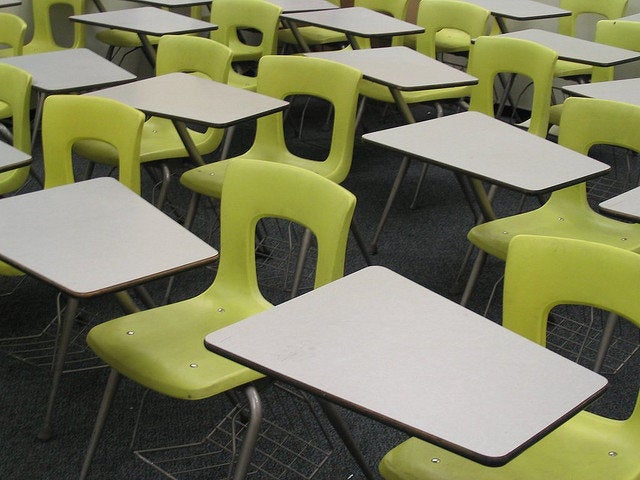
Co-authored by Mike Misner.
Several small citizen groups recently went after the children's book publishing giant Scholastic. At issue were books that were distributed to elementary schools in the United States as part of the publisher's paid partnership with the American Coal Foundation.
The groups, Rethinking Schools, the Campaign for a Commercial-Free Childhood and Friends of the Earth, accused Scholastic of producing books that read like brochures from the coal industry.
The coal industry would like that, because the whole coal story is less flattering. Coal is an abundant fuel, burned to generate electricity. But coal's "cheap" price fails to include its costs. When you realize coal's effects on health and our environment, coal is exceptionally costly.
Mountaintop removal -- chopping the tops off mountains and subsequently destroying the surrounding ecosystems -- is one of the main techniques used to expose layers of the black rock.
When burned, coal spews more carbon dioxide into the atmosphere than any other fossil fuel. (The misleading term "clean coal" just means coal that emits smaller amounts of carbon dioxide than other kinds of coal. It would better termed "slightly less dirty coal.")
Carbon dioxide both warms the atmosphere and makes the oceans more acidic. Already, this is slowing and distorting the growth of coral reefs and in some places dissolving juvenile shellfish.
Coal-burning power plants also account for over half of all mercury emissions in the US. Eventually, that mercury finds its way into the oceans and makes its way up the food web to the fish we love to eat. The toxin is thus passed on to people. Unfortunately, fetuses and infants are especially vulnerable to mercury, which damages developing nervous systems and stunts brain development.
All these things are the real costs of coal. They're not reflected in the price, but we all pay these costs. If these costs were included in the price of coal, coal would be very expensive. And that matters, because better, cleaner energy technologies would become very competitive. That would be a market that worked, because it would recognize and reflect reality. This is the part of the story that the coal industry conveniently leaves out.
Of course we cannot turn off one fully established industry and turn on another overnight. Many energy experts agree that old, fossil fuel burning sources of energy will have to be around for the transition. So unfortunately coal is here for a while.
This may be why the Obama administration recently had a fire sale in Wyoming for public land thick with coal. Maybe it is also why billionaires like Warren Buffet are betting on coal. Buffett's company owns Burlington Northern, a major coal hauling railroad, and Mid American, one of the largest coal burning utilities in the country.
While billionaires like Buffett are making money on coal, they are also doing good things with philanthropy. In the same ethos, they should spend more money on clean energy in the US.
According to a report by the Pew Charitable Trust, there is money to be made. "If clean energy policies are strengthened significantly in the coming years, the report projects that $2.3 trillion will be invested in clean power assets over the next 10 years, offering companies and countries enormous opportunities."
The whole story is that coal is neither renewable nor clean, and should be thought of as a temporary fuel during a transition away from coal and toward new and existing clean sources of energy.
The final piece of the transition away from coal would be to clean up coal while we still have to live with it. This starts with the dirty twenty five coal-fired power plants that are responsible for nearly a third of all mercury emissions from power production. These plants should drastically reduce their mercury emissions as soon as possible.
The coal industry resists these kinds of clean ups in ways large and small, often raising the specter of jobs and costs. The costs to comply with government standards adds up to about $10 million for the coal burning industry while the potential benefits for people and the planet add up to about $100 million. No contest there.
Even people within in the coal industry admit that technologies that clean the dirty smokestacks are readily available and affordable. And, capturing pollutants emitted by burning coal adds jobs.
Coal's status should be a stepping-stone to technologies that harness the clean renewable energies that naturally power the planet. There is no magic bullet for moving from a fossil fuel economy to a renewable energy economy. But any long term planning that includes burning coal is at best living in the past and at worst shortsighted folly that we cannot afford.
This is the story of jobs and billions in potential investment in American ideas, infrastructure, business, and technology. That's the happy ending to a true coal story we could all live with.
